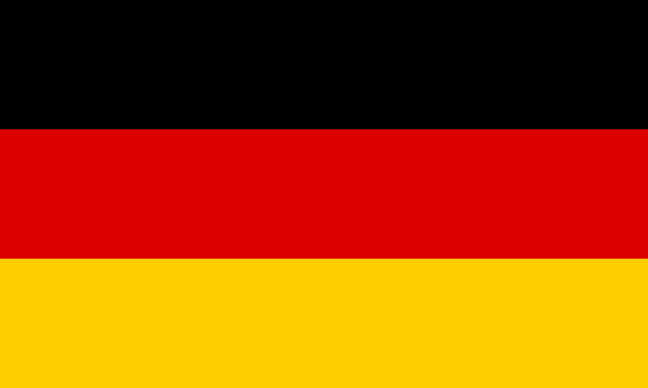Throughout watchmaking, you will see two countries popping up. Switzerland, and Germany. The most prestigious watch brands around historically were based in either of these two countries. such as A. Lange and Söhne in Glashütte Germany and Rolex in Geneva Switzerland as perfect examples. but the history of these key horological locations is completely different and contributes to the formation of watch brands we have today as well as the very industry itself.
HISTORY, GERMANY:
Germany was the first nation to produce a portable timekeeping device, as early as 1509 by Peter Henlein, so it is only fair we begin our trip to the past in Germany. This will be a very history heavy blog post, so if history isn’t your thing today’s post might not be for you.
fascinatingly, watchmaking in Germany began in an orphanage in Pforzheim when Jean Francois Autran was granted permission to open a watchmaking facility in an orphanage in the 1760s to give the orphans the chance to develop useful and tradeable skills. Less than a century later, workers in Pforzheim were unionising and various schools teaching a multitude of trades had sprung up. Brands still around today were established in Pforzheim such as Laco in 1920 and Stowa in 1927. Though they began by fitting Swiss movements to their German-made cases. This changed in 1933 though, where Ludwig Hummel the man in charge at Laco began a movement factory named Durowe. Durowe began supplying other brands with their movements and by 1940 they were producing 300 movements a year.
Watchmaking in Glashütte started not long after when in 1845 Ferdinand Adolph Lange (Great grandfather of Walter Lange) established a watchmaking facility with an apprenticeship scheme supported by the Saxon Government. This developed into the German school of watchmaking which by this point had garnered a worldwide reputation. In fact, in 1920 one of the teachers at the school invented the flying tourbillion. Factories within Glashütte had the ability to develop high-end complications as well as supply movements in bulk, making them another key industrial centre for German watchmaking.
However, the war-ravaged both the industries in Pforzheim and Glashütte. Laco, Stowa & Lange (as well as Wempe and assisted by Swiss IWC who also manufactured small numbers of the B-Uhr Flieger watch) were commissioned to construct Flieger pilot’s & navigator’s watches for the Luftwaffe in the war, the factories were largely repurposed. Most producing fuses for bombs, artillery shells and torpedoes. However, with the importance of the region of Pforzheim as an industrial area, it was a frequent target for allied air raids. It took years for the factories in Pforzheim to recover after the war with Laco resuming production in 1949 and Stowa in 1951. However, being situated in the East half of divided Germany they were revived by American Marshall aid. With Stowa and Laco facing a boom period in the 1950s, only to be hit hard by the quartz crisis. Laco sold off their movement manufacture Durowe in 1965 to the origins of ETA the Ebauches S.A. but the Laco name lay dormant until it was bought again in the 1980s by Erich Lacher who split from the company in the 1930s. Allowing the Laco name to continue today. Stowa, to stay afloat in the turbulent era of the 1960s and ’70s partnered with a group known as Pallas to share similar construction and parts until the 1980s where mechanical watches began to be seen as luxury watches and began their resurgence.
However, the watch groups of Glashütte suffered a much more unfortunate fate following the war.
With Glashütte being situated in the Soviet-occupied region of East Germany. following the war the Russians stole much of the watchmaking equipment in Glashütte, taking it back to Russia. With the brands remaining in Glashütte now under a communist economy. It was not long before all the watchmaking left in Glashütte were consolidated into one ‘publicly’ owned mass of drab assembly lines. This is where the history of watch companies based in Glashütte is largely non-existent, lost to the amalgamation of watch companies the VEB Glashütter Uhrenbetriebe (GUB). As the Soviet Union collapsed and East Germany became independent, the Glashütte watch industry exploded. The GUB was immediately bought out and after being sold and bought a few times Heinz Pfeifer purchased Glashütte Uhrenbetrieb GmbH and formatted the company into the Glashütte Original we know today.
Walter Lange founded the new A.Lange & Söhne in 1990 and despite its turbid history, it now stands arguably as the best watch brand in the world. And Glashütte is once again where it started roughly a decade before as the famed home of German watchmaking.
PART 2…
To Prevent this Blog post becoming a several hour-long history lesson, the Swiss segment of this blog post will come next week for part 2 where we’ll delve into the equally varied history of Swiss watchmaking!
Be sure to follow The Watch Source blog for instant email notifications when we publish new releases! Alternatively, like our Facebook, Instagram or Twitter to be the first to know about updates from The Watch Source blog and the recently revived watch source YouTube channel where we’ll be posting video versions of the blog posts and more!
YouTube: https://www.youtube.com/channel/UC9hyn-RgapIl6lYWYbA6nEQ
Facebook: https://www.facebook.com/thewatchsource/
Twitter: https://twitter.com/WatchSourceUK
Instagram:
Preowned: https://www.instagram.com/watchsourcepreowned/
Main: https://www.instagram.com/watchsource/
References:

